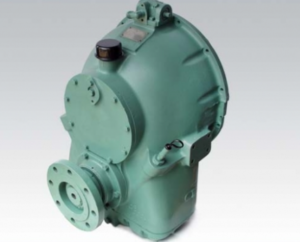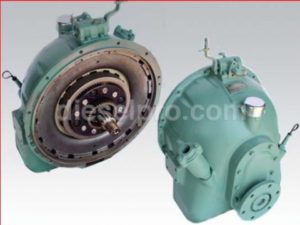

Allison M Rebuilt Marine Transmission
Overhaul Kit & Related Components For Allison M
Allison M Seals
Allison M Clutch Plates
Allison M Hydraulic Pump
Allison M Selector Valve & Related Components
Allison M Bearings & Related Components
Allison MH Rebuilt Transmission
Allison MH Overhaul Kit & Related Components
Allison MH Seals
Allison MH Clutch Plates & Related Components
Allison MH Hydraulic Pump
Allison MH Selector Valve
Allison MH Bearings & Related Components
Priming Lubrication Systems For Allison M & MH Marine Transmissions
Lubrication is the lifeblood of any marine transmission, and priming the system before startup is one of the most important steps you can take to prevent early wear or catastrophic failure. When a transmission is dry or has been sitting unused, oil must be circulated throughout the internal components before the engine is allowed to turn under load.
Without priming, clutch packs, gears, bearings, and hydraulic passages will operate without lubrication for the first few moments, which is all it takes to cause damage. This step is especially critical after a full rebuild or a new installation.
Manual Priming Methods
For Allison M and MH series transmissions, priming can be done through several acceptable techniques:
- Cranking the engine without starting it – Disconnect the fuel supply or ignition circuit and crank the engine to rotate the input shaft without combustion. This allows the internal pump to circulate oil.
- Turning the transmission output flange by hand – With the engine off and the transmission filled with fluid, slowly rotate the output flange in neutral. This helps distribute oil into pockets and clutch packs.
- Using an external pre-lube pump – This method injects oil under pressure into the transmission cooler circuit or pressure test port before the engine is turned.
Priming Tips
- Prime until you see oil returning to the reservoir (if transparent or accessible), or until oil is visible in the inspection port.
- Use a low-pressure gauge to ensure you’re building at least 5–10 psi during manual priming.
- If possible, remove an oil gallery plug and verify oil presence at the highest point.
Never assume priming has occurred simply because the transmission has been filled. Always verify oil has reached the key components internally before startup.
Fluid Type and Fill Instructions For Allison M & MH Marine Transmissions
Choosing the right fluid and ensuring it is filled to the correct level are foundational to the long-term health of the transmission. Allison M and MH series gearboxes are hydraulic in nature—fluid acts both as a lubricant and as the medium for torque transfer and clutch operation.
Approved Fluid Types
The recommended fluid for most Allison M & MH transmissions is:
- Dexron III or equivalent ATF – Used widely due to its thermal stability, oxidation resistance, and friction characteristics.
- SAE 30 non-detergent motor oil – Sometimes recommended for specific commercial applications or when used in extremely high-load environments.
- Allison C-4 rated oils – Specially formulated for heavy-duty automatic transmissions under high temperatures.
Always check your model’s compatibility with each fluid type. Rebuilt transmissions should be flushed and matched to the fluid type specified by the rebuilder.
Fluid Capacity Guidelines
While capacity varies based on cooler loop length and whether filters are remote-mounted, approximate capacities are as follows:
- Allison M Series: 7 to 10 quarts
- Allison MH Series: 10 to 16 quarts
Note: This includes fluid for the internal sump, cooling lines, and oil cooler.
Fill Procedure
- Ensure drain plug is secure and any new filters or gaskets are installed.
- Add 75% of total capacity via the fill port or dipstick tube.
- Let the fluid settle for 5–10 minutes, then check the level.
- Continue filling until fluid reaches the “FULL COLD” mark on the dipstick.
After initial fill, allow the engine to idle (after priming) and top off to the correct HOT IDLE level. Never overfill—this causes foaming and overheating.
Manual Engagement and Rotation For Allison M & MH Marine Transmissions
Before putting power to the propeller, it’s wise to manually engage the transmission through its ranges and rotate the output shaft to verify that everything functions as expected. This can help you catch binding, gear mesh issues, or improperly installed components before the engine runs under load.
Engaging Forward and Reverse
- With the engine off and transmission filled, manually shift the control lever into:
- Neutral
- Forward
- Reverse
- In each gear:
- Try rotating the output flange by hand.
- In forward/reverse, you should feel resistance or engagement depending on hydraulic preload.
- In neutral, the flange should rotate freely.
- Try rotating the output flange by hand.
If rotation feels tight or binding is present, recheck clutch clearances, fluid levels, and alignment.
When Manual Rotation Is Difficult
If hand rotation is too stiff:
- Use a strap wrench or propeller shaft lever (never use excessive force).
- Verify that transmission mounts and shaft are not misaligned.
- Inspect the output shaft for burrs or uneven pressure from the flange.
Manual rotation is also a good way to seat oil into the bearings before first power-on. Turn at least 5–10 revolutions in both directions in neutral before moving forward.
Air Testing and Pressure Checks For Allison M & MH Marine Transmissions
Before the engine is started, many professional marine mechanics use air testing or static hydraulic pressure tests to verify internal clutch operation and seal integrity. This is a powerful diagnostic step that can prevent expensive teardown if problems are found early.
Air Testing the Clutch Packs
- Locate the hydraulic test ports or access plates on the side of the transmission.
- Apply 30–50 psi of shop air through the test port while the transmission is in neutral.
- Listen and observe:
- You should hear smooth clutch engagement.
- No air should escape through case seams, dipsticks, or vent ports.
- Engage each gear via control lever and apply air again.
If you hear hissing inside the case or see oil pushed out, the piston seals may be leaking. If no movement or engagement is felt, the clutch pack may be misaligned or stuck.
Static Hydraulic Pressure Test
- Connect a low-pressure hydraulic gauge (0–300 psi) to the main pressure test port.
- Crank the engine (without starting) and watch for initial pressure rise.
- After startup:
- Idle pressure should range between 60–100 psi.
- In gear under load, pressure may rise to 150–200 psi.
- Fluctuating or low pressure can indicate:
- A faulty pump
- Air in the hydraulic circuit
- Leaking clutch piston
- Blocked cooler return
Always compare pressure readings with the original manual specs or consult Diesel Pro Power for model-specific thresholds.
First-Run Operating Parameters For Allison M & MH Marine Transmissions
The first operational run is not just a mechanical check—it’s a critical evaluation of how the transmission behaves under real engine conditions. This phase sets the tone for long-term reliability, and careful monitoring is non-negotiable.
Step-by-Step First Start Procedure
- Double-check fluid level at the dipstick or sight glass.
- Start the engine at idle RPM (do not throttle up yet).
- Allow the transmission to warm up to operating temperature (usually 140°F to 180°F).
- Shift into forward and reverse at idle:
- Ensure smooth, immediate engagement
- Watch for any delay, chatter, or clunking
- Verify propeller rotation direction from above deck or through underwater inspection.
- Check fluid pressure again using the port if accessible.
Monitoring for Issues
During the first 30 minutes of runtime:
- Watch transmission temperature (do not exceed 200°F)
- Look for oil leaks from gaskets, seals, or lines
- Listen for knocking or gear whine
- Shift between gears multiple times and observe responsiveness
If any of the following occurs, shut down immediately:
- Abnormal noise or vibration
- Gear slippage
- Excessive delay in engagement
- Low or no hydraulic pressure
Fluid Recheck and Top-Off
After warm-up and cycling:
- Shift into neutral and let the system idle for 2–3 minutes.
- Recheck the dipstick—oil level should be at the HOT IDLE mark.
- Add small amounts (½ quart at a time) as needed.
- Do not overfill—the system needs expansion room when hot.
Short Sea Trial (Optional)
If possible, perform a low-speed test run:
- Accelerate smoothly to mid-range RPM.
- Observe engine and transmission temperature.
- Monitor responsiveness when shifting under load.
- After docking, recheck all mounting bolts and coupling hardware for tightness.
Final Considerations For Allison M & MH Marine Transmissions
The initial startup procedure is where attention to detail pays off. Proper priming, slow warmup, and vigilant monitoring ensure the transmission transitions from installation to service life smoothly.
At Diesel Pro Power, we recommend:
- Logging pressure, temperature, and fluid levels during the first 10 hours of operation.
- Scheduling a re-torque check of mounting bolts and coupling hardware within 10–20 hours.
- Changing the transmission fluid and filter after first 25–50 hours to remove debris from break-in.
By following this guide, operators and mechanics can confidently start up Allison M & MH marine transmissions and expect years of reliable performance with minimal issues.
Allison M Rebuilt Marine Transmission
Overhaul Kit & Related Components For Allison M
Allison M Seals
Allison M Clutch Plates
Allison M Hydraulic Pump
Allison M Selector Valve & Related Components
Allison M Bearings & Related Components
Allison MH Rebuilt Transmission
Allison MH Overhaul Kit & Related Components
Allison MH Seals
Allison MH Clutch Plates & Related Components
Allison MH Hydraulic Pump
Allison MH Selector Valve
Allison MH Bearings & Related Components



 Free US Calls: 1-888-433-4735
Free US Calls: 1-888-433-4735 International: 305-545-5588
International: 305-545-5588